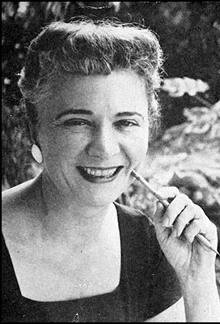
Catherine Lucille Moore was an American science fiction and fantasy writer, who first came to prominence in the 1930s writing as C. L. Moore. She was among the first women to write in the science fiction and fantasy genres. Moore's work paved the way for many other female speculative fiction writers.
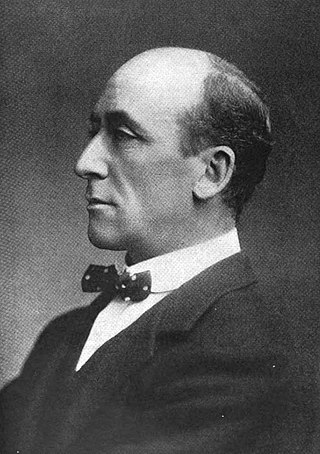
Algernon Henry Blackwood, CBE was an English broadcasting narrator, journalist, novelist and short story writer, and among the most prolific ghost story writers in the history of the genre. The literary critic S. T. Joshi stated, "His work is more consistently meritorious than any weird writer's except Dunsany's" and that his short story collection Incredible Adventures (1914) "may be the premier weird collection of this or any other century".

Weird Tales is an American fantasy and horror fiction pulp magazine founded by J. C. Henneberger and J. M. Lansinger in late 1922. The first issue, dated March 1923, appeared on newsstands February 18. The first editor, Edwin Baird, printed early work by H. P. Lovecraft, Seabury Quinn, and Clark Ashton Smith, all of whom went on to be popular writers, but within a year, the magazine was in financial trouble. Henneberger sold his interest in the publisher, Rural Publishing Corporation, to Lansinger, and refinanced Weird Tales, with Farnsworth Wright as the new editor. The first issue to list Wright as editor was dated November 1924. The magazine was more successful under Wright, and despite occasional financial setbacks, it prospered over the next 15 years. Under Wright's control, the magazine lived up to its subtitle, "The Unique Magazine", and published a wide range of unusual fiction.

Carl Richard Jacobi was an American journalist and writer. He wrote short stories in the horror and fantasy genres for the pulp magazine market, appearing in such pulps of the bizarre and uncanny as Thrilling, Ghost Stories, Startling Stories, Thrilling Wonder Stories and Strange Stories. He also wrote stories crime and adventure which appeared in such pulps as Thrilling Adventures, Complete Stories, Top-Notch, Short Stories, The Skipper, Doc Savage and Dime Adventures Magazine. Jacobi also produced some science fiction, mainly space opera, published in such magazines as Planet Stories. He was one of the last surviving pulp-fictioneers to have contributed to the legendary American horror magazine Weird Tales during its "glory days". His stories have been translated into French, Swedish, Danish and Dutch.
Weird fiction is a subgenre of speculative fiction originating in the late 19th and early 20th centuries. Weird fiction either eschews or radically reinterprets traditional antagonists of supernatural horror fiction, such as ghosts, vampires, and werewolves. Writers on the subject of weird fiction, such as China Miéville, sometimes use "the tentacle" to represent this type of writing. The tentacle is a limb-type absent from most of the monsters of European folklore and gothic fiction, but often attached to the monstrous creatures created by weird fiction writers, such as William Hope Hodgson, M. R. James, Clark Ashton Smith, and H. P. Lovecraft.

Unknown was an American pulp fantasy fiction magazine, published from 1939 to 1943 by Street & Smith, and edited by John W. Campbell. Unknown was a companion to Street & Smith's science fiction pulp, Astounding Science Fiction, which was also edited by Campbell at the time; many authors and illustrators contributed to both magazines. The leading fantasy magazine in the 1930s was Weird Tales, which focused on shock and horror. Campbell wanted to publish a fantasy magazine with more finesse and humor than Weird Tales, and put his plans into action when Eric Frank Russell sent him the manuscript of his novel Sinister Barrier, about aliens who own the human race. Unknown's first issue appeared in March 1939; in addition to Sinister Barrier, it included H. L. Gold's "Trouble With Water", a humorous fantasy about a New Yorker who meets a water gnome. Gold's story was the first of many in Unknown to combine commonplace reality with the fantastic.

Manly Wade Wellman was an American writer. While his science fiction and fantasy stories appeared in such pulps as Astounding Stories, Startling Stories, Unknown and Strange Stories, Wellman is best remembered as one of the most popular contributors to the legendary Weird Tales and for his fantasy and horror stories set in the Appalachian Mountains, which draw on the native folklore of that region. Karl Edward Wagner referred to him as "the dean of fantasy writers." Wellman also wrote in a wide variety of other genres, including historical fiction, detective fiction, western fiction, juvenile fiction, and non-fiction.

Tanith Lee was a British science fiction and fantasy writer. She wrote more than 90 novels and 300 short stories, and was the winner of multiple World Fantasy Society Derleth Awards, the World Fantasy Lifetime Achievement Award and the Bram Stoker Award for Lifetime Achievement in Horror. She also wrote a children's picture book, and many poems. She wrote two episodes of the BBC science fiction series Blake's 7 .
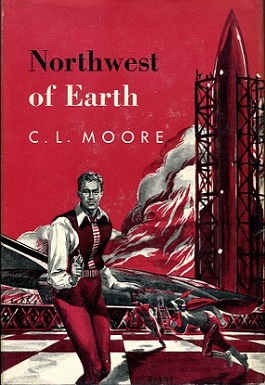
Northwest Smith is a fictional character, and the hero of a series of stories by science fiction writer C. L. Moore.

Donald Albert Wandrei was an American science fiction, fantasy and weird fiction writer, poet and editor. He was the older brother of science fiction writer and artist Howard Wandrei. He had fourteen stories in Weird Tales, another sixteen in Astounding Stories, plus a few in other magazines including Esquire. Wandrei was the co-founder of the prestigious fantasy/horror publishing house Arkham House.

Darrell Charles Schweitzer is an American writer, editor, and critic in the field of speculative fiction. Much of his focus has been on dark fantasy and horror, although he does also work in science fiction and fantasy. Schweitzer is also a prolific writer of literary criticism and editor of collections of essays on various writers within his preferred genres.

Edgar Hoffmann Trooper Price was an American writer of popular fiction for the pulp magazine marketplace. He collaborated with H. P. Lovecraft on "Through the Gates of the Silver Key".
Lois Tilton is an American science fiction, fantasy, alternate history, and horror writer who has won the Sidewise Award and been a finalist for the Nebula Award. She has also written a number of innovative vampire stories.

"Medusa's Coil" is a short story by H. P. Lovecraft and Zealia Bishop. It was first published in Weird Tales magazine in January 1939, two years after Lovecraft's death. The story concerns the son of an American plantation owner who brings back from Paris a new wife. It mixes elements of Lovecraft's Cthulhu Mythos with the ancient Greek myth of Medusa, but it has also been noted for its racist aspects.
Mary Elizabeth Counselman was an American writer of short stories and poetry.

Clare Winger Harris was a pioneering science fiction writer whose short stories were published during the 1920s. She is credited as the first woman to publish stories under her own name in science fiction magazines. Harris began publishing stories in 1926 and soon became popular with readers, with most of her fiction appearing in the influential magazine Amazing Stories. She published a total of twelve stories, all but one of which were collected in 1947 as Away From the Here and Now; a full collection was not published until 2019 when The Artificial Man and Other Stories appeared. Her stories, which often feature strong female characters, have been reprinted in anthologies such as Library of America's The Future Is Female! 25 Classic Science Fiction Stories by Women and Wesleyan University Press's Sisters of Tomorrow: The First Women of Science Fiction.

Scarlet Dream is a collection of science fiction short stories by C. L. Moore with illustrations by Alicia Austin. It was first published in 1981 by Donald M. Grant, Publisher, Inc. in an edition of 1,820 copies, of which 220 were bound in buckram, boxed, and signed by the author and artist. The stories feature Moore's character Northwest Smith. All but the last story originally appeared in the magazine Weird Tales.
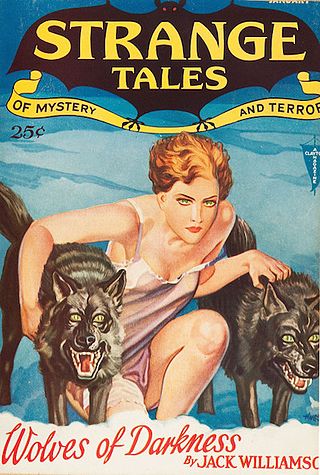
Strange Tales was an American pulp magazine first published from 1931 to 1933 by Clayton Publications. It specialized in fantasy and weird fiction, and was a significant competitor to Weird Tales, the leading magazine in the field. Its published stories include "Wolves of Darkness" by Jack Williamson, as well as work by Robert E. Howard and Clark Ashton Smith. The magazine ceased publication when Clayton entered bankruptcy. It was temporarily revived by Wildside Press, which published three issues edited by Robert M. Price from 2003 to 2007.
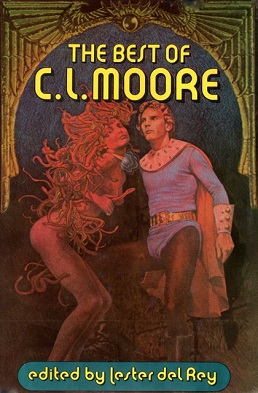
The Best of C. L. Moore is a collection of science fiction and fantasy short stories by American author C. L. Moore, edited by Lester del Rey. It was first published in hardback by Nelson Doubleday in November 1975 and in paperback by Ballantine Books in March 1976 as a volume in its Classic Library of Science Fiction. A second hardcover edition was issued by Taplinger in 1977, and the paperback edition was reissued by Del Rey/Ballantine in December 1980 and January 1981. The book has been translated into German and Italian.
Jon Arfstrom was an American artist of imaginative realism known for his fantastical works in the fantasy and horror genres, active both in the late pulp fiction era of the 1950s, with his Weird Tales cover art and interior illustration work, and then again in science fiction publishing in the 1980s, for his mature cover work, for which he received a Bram Stoker Award in 1994.















